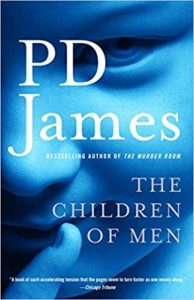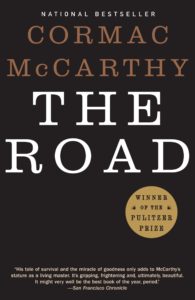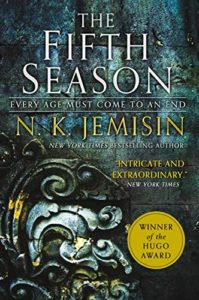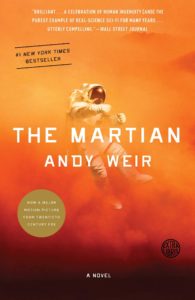Are you a writer preparing to delve into speculative fiction? Or a reader looking to expand your horizons within the genre? You’ve come to the right blog! We’re about to take a deep dive into the different types of speculative fiction, with example novels for each genre.
What Is Speculative Fiction, Exactly?
Trying to define speculative fiction can be like opening a can of worms. People have argued about the definition for decades, for as long as the label has been used.
Years ago, the term “speculative fiction” was more of less synonymous with “science fiction.” But that’s no longer the case. Today, it’s an umbrella category that includes a wide range of sub-genres like horror, dystopia, sci-fi and more.
Definition: Speculative fiction is a category or genre of fiction that includes settings or elements that do not exist within our current reality. These stories often involve supernatural, futuristic, or other imagined elements.
The verb “speculate” has several meanings that can help us understand the nature of speculative fiction. When you speculate on something, you ponder it and develop some kind of hypothesis or opinion about it. The same is true in fiction. Consider the following examples:

- The Children of Men: Author P.D. James speculated about what might happen if the entire human race became infertile.
- The Martian: Andy Weir speculated about how a man could survive on Mars after being stranded on the planet.
- Harry Potter: J.K. Rowling speculated about what life might be like for students at a school for witchcraft and wizardry.
So we have a broad definition of speculative fiction, as a kind of umbrella genre. Now, let’s drill down and talk about the different types or subgenres of speculative fiction available to readers.
Seven Popular Types of ‘Spec Fic’ Novels
And now for another can of worms. Readers and writers have long debated which types of stories or novels should fall under the “speculative fiction” umbrella. For instance, some people consider sci-fi one of the many types of speculative fiction, while others believe it should always stand alone.
But there’s also some agreement on this subject. Below, I’ve listed the common categories or types of speculative fiction that most people seem to agree on. This list is not all-inclusive, and it could probably be broken down even further. But it does the job.
1. Alternate History
Alternate history is a type of speculative fiction that offers an alternate (and fictional) version of a historical event or timeframe. What if the South won the U.S. Civil War? What if Hitler survived? What if the Titanic dodged the iceberg?
These stories and novels reshape historical events for the purposes of entertainment and/or social commentary. They combine history and fiction, often with fascinating results.
Example novels: 11/22/63, by Stephen King. Dread Nation, by Justina Ireland. The Man in the High Castle, by Philip K. Dick. Noughts & Crosses, by Malorie Blackman.
2. Apocalyptic and Post-Apocalyptic

The world is ending — or it already has. Yes, I’m talking about apocalyptic and post-apocalyptic fiction.
If you’ve poked around my blog a bit, you probably already know I’m a huge fan of this subgenre. In these thrilling stories, the world is either ending or being transformed in some major way. Today, this is one of the most popular types of speculative fiction.
Example novels: The Road, by Cormac McCarthy. Swan Song, by Robert McCammon. Station Eleven, by Emily St. John Mandel. Oryx and Crake, by Margaret Atwood.
3. Dystopian
Dystopian fiction has enjoyed a surge in popularity over the past few years. The Hunger Games book series had a lot to do with that. Suddenly, everyone wanted to read books about frightening societies where individuals struggle against harsh regimes and systems.
Related: Dystopian vs. post-apocalyptic fiction
These stories often feature totalitarian regimes, strict government control, environmental devastation, and the loss of individualism.
Example novels: Brave New World, by Aldous Huxley. Fahrenheit 451, by Ray Bradbury. The Farm, by Joanne Ramos. The Giver, by Lois Lowry. Jennifer Government, by Max Barry. The Handmaid’s Tale, by Margaret Atwood. The Hunger Games, by Suzanne Collins. Nineteen Eighty-Four, by George Orwell.
4. Fantasy
As a type of speculative fiction, fantasy includes elements that exist outside of reality. (Think dragons and magical powers.)

These stories and novels often take place within a fictional world or universe, and are sometimes inspired by mythology and folklore. World-building is another hallmark of fantasy fiction.
Based on book sales, fantasy is arguably the most popular type of speculative fiction. Pull up a list of the best-selling books of all time, and you’ll find numerous fantasy titles, including The Hobbit and the Harry Potter books.
Example novels: The Fifth Season, by N.K. Jemisin. The Way of Kings, by Brandon Sanderson. A Game of Thrones, by George R.R. Martin. A Wizard of Earthsea, by Ursula K. Le Guin. The Hobbit, by J.R.R. Tolkien. The Lion, the Witch and the Wardrobe, by C.S. Lewis.
5. Horror
Some works of horror fall under the speculative fiction umbrella, while others do not. It depends on whether or not the story includes otherworldly or fantasy-based elements.
For instance, a horror novel featuring a vampire, ghost or six-legged monster could be considered a type of speculative fiction; while a story featuring a serial killer would not.
Example novels: Bird Box, by Josh Malerman. The Exorcist, by William Peter Blatty. The Haunting of Hill House, by Shirley Jackson. Interview with the Vampire, by Anne Rice. The Passage, by Justin Cronin.
6. Science Fiction

Along with fantasy, sci-fi is one of the most popular types of speculative fiction. And like the fantasy genre, science fiction allows authors to create new worlds unlike anything the reader has seen before. There are very few limits when it comes to writing sci-fi.
Science fiction stories and novels often feature elements like space travel, alien life, futuristic worlds, time travel, and advanced technologies.
Example novels: Ancillary Justice, by Ann Leckie. Dune, by Frank Herbert. The Left Hand of Darkness, by Ursula K. Le Guin. The Martian, by Andy Weir. Neuromancer, by William Gibson.
7. Utopian
Utopian fiction represents the thematic opposite of the dystopian stories mentioned earlier. Where a dystopia shows us a terrible version of the world, utopias present a more ideal (or nearly perfect) existence.
And then we have the so-called “false utopia” genre of speculative fiction, in which a seemingly perfect world harbors a darker side.
Example novels: Childhood’s End, by Arthur C. Clarke. Ecotopia, by Ernest Callenbach. Enemies of the System, by Brian Aldiss. Island, by Alduous Huxley. Woman on the Edge of Time, by Marge Piercy.
Speculative fiction novels can challenge and entertain us. They deliver thrills, chills, big ideas, and exotic settings. They’re written by imaginative writers and well suited for imaginative readers. And you’ll find more than two-dozen of them listed above. Happy reading!
